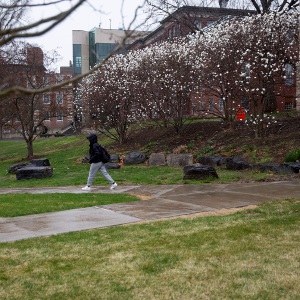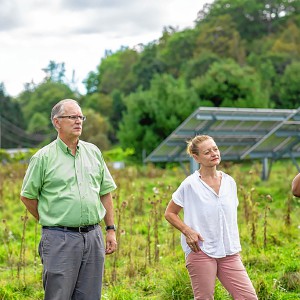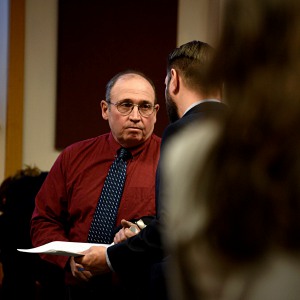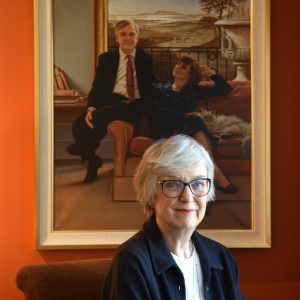An App to Keep Students Off Their Phones During Class
| Published: 09-24-2018 9:48 AM |
Like many educators, Lorenz Neuwirth, a professor of biopsychology and neuropsychology at SUNY Old Westbury, was tired of his students scrolling through their phones during class. The students were physically present, but mentally many were miles away — and their class participation and grades reflected that.
So two years ago, Neuwirth used his own money to pay for his students to download a new app called Flipd, which monitors the amount of time users spend on their phones. If students engaged with their phones during his classes, Neuwirth could see and track it, and it affected their final grades.
Flipd, which launched in 2016, was originally designed as a parental control app. From one phone, a parent could remotely lock a child’s phone. Not surprisingly, that got bad reviews from kids. But then a different use for the technology emerged. Similar to Fitbit, the app could be used to set goals for how much time a user wanted to spend off the phone, and then track the person’s minutes away from the screen.
Unlike other approaches to smartphone overuse that lock away phones or censure users for time spent online, Flipd rewards them for minutes spent offline. Success or failure notifications let them know if they have met their goals.
Flipd has over 500,000 users globally, including 60,000 in North America, and has been used at over 100 colleges across the United States, said its cofounder Alanna Harvey. Sixty percent of users are in classes where students have been asked to use it.
It is free to download, but for more personalized use, including seeing your history over time, non-students pay $6 a month or $24 per year.
During the time users are supposed to be off their phone, it is not locked; they can still use it. But if they do, the app will stop counting their minutes away and will send them a message indicating that they failed to meet their goal.
Article continues after...
Yesterday's Most Read Articles
 Zantop daughter: ‘I wish James' family the best and hope that they are able to heal’
Zantop daughter: ‘I wish James' family the best and hope that they are able to heal’
 Crowd turns out to honor late Ascutney Fire Chief Darrin Spaulding
Crowd turns out to honor late Ascutney Fire Chief Darrin Spaulding
 A Life: For Kevin Jones ‘everything was geared toward helping other people succeed’
A Life: For Kevin Jones ‘everything was geared toward helping other people succeed’
 Pick a sport and Pete DePalo’s has probably officiated it over the past 40-plus years
Pick a sport and Pete DePalo’s has probably officiated it over the past 40-plus years
 Out & About: Vermont Center for Ecostudies continues Backyard Tick Project
Out & About: Vermont Center for Ecostudies continues Backyard Tick Project
Parents, teachers and psychologists have voiced growing concern that smartphone addiction is undermining young people.
Studies have shown a correlation between the onset of widespread smartphone use and increased depression and anxiety among teens.
Former tech executives have spoken out against the tactics their former employers use to make screens addictive, and some tech companies have started offering users the ability to track how long they spend in a given app.
In July, France banned cellphone use in schools for children between 3 and 15. But in the United States, high school, middle school and even elementary school students are increasingly bringing them to school. For many, college is the first time no one is regulating their screen time, and some have a hard time adjusting.
Using Flipd, professors can tie students’ grades to how well they succeed in staying off their phones during class. In Neuwirth’s class, five percent of their final grade is docked if they don’t use the app.
He has noticed a marked change since getting it for his students. Attendance rates increased. “Their heads are not engaged in their cellphones,” he said. “Their hands are free to take notes. There’s increased active learning...and students became more involved in their own education.”
Kivanc Avrenli, a professor of analytics and statistics at Syracuse University, said he also had a hard time capturing the attention of all his students before he started using the app.
“Even if you’re a stand-up comedian, even if you’re the most engaging teacher on Earth, there would still be a few students who are constantly on their smartphones,” he said. Now, five percent of their grade is based on attendance, and if he sees they have used phones in class, points are deducted. Using Flipd, he said, “We can use mobile technology against distraction by mobile technology.”
Although Avrenli met with some resistance at first, “It turned out way more successful than I thought,” he said. “Students were excited to use it, especially when I explained to them why we were doing it, that (using phones in class) means they’re wasting their time, they’re wasting their money, and they get lost during lecture time.”
Now, he said, “Distraction by cellphones has completely gone away. They got to see that they can survive without checking their messages or emails during lecture time.”
Harvey said young people have been surprisingly receptive to the technology. “We found there were a lot of people who were voluntarily locking themselves out of their phones, and they were younger than we expected,” she said. “College and even high school students were using the app to unplug during a lecture or for a few hours at a time when they needed to focus on homework.”
That may seem counterintuitive, but a recent study from the Pew Research Center found that even in these hyperwired times, 53 percent of U.S. teenagers report taking steps to reduce their own cellphone use and more than half have tried to limit their use of social media and video games.
Matthew Feldman, 21, a senior at Syracuse, first used the app in Avrenli’s class this past spring. Previously, “if there were some down time, I would pull out my phone, look at notifications,” he said. “Most of us would text our friends, check SnapChat, check Instagram. If would be sitting in my pocket, I’d feel it vibrate, I’d pull it out and check messages.”
Feldman was hesitant at first about using the app, but he said it was helpful for him not only to stay off his own phone but it also eliminated the distraction of having students around him using theirs.
With everyone off their phones, “It promotes more of a sense of class involvement, it creates a lot more of a collaborative environment,” he said. “I wasn’t getting bored anymore because the students around me were also not on their phones.”
Feldman also likes that the app allows him to track how he’s doing. “Like, ‘Oh, this week I spent six hours off my phone’ — which is cool.”
For some students, the ability to keep track and compete with peers is an appealing part of the app; in some classes, Harvey said, professors have gamified it, allowing students to see how many off-screen hours their classmates have racked up.
Not all students love it. A small percent refuse to use Flipd, saying it is an invasion of privacy or it takes up too much space on their phone, said Neuwirth, who is working on a study of the effectiveness of the app.
But many thank him for it. “By the end of the semester or partway through they start to realize, ‘This is a bad habit,’” he said. “Once they’re off their phones, you can actually get their attention to teach them.”

 Former principal of South Royalton School released from prison
Former principal of South Royalton School released from prison Upper Valley residents among advocates for NH aid-in-dying bill
Upper Valley residents among advocates for NH aid-in-dying bill 
